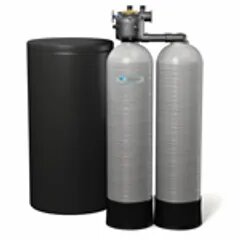What's Your Water Like? Water Quality Can No Longer Be Taken for Granted, and Actually Gets Worse Every Year.
GET YOUR WATER CHECKED NOW

Hard Water
Hard water contains dissolved calcium, magnesium, and in many cases, iron. Most homes have hard water, whether a private well or a municipality supplies it. In many cases, homeowners don't realize they have hard water or the constant and expensive harm it causes.
Dry skin and hair, bathtub ring, spots on glass, silverware and fixtures, dull, dingy clothing, disappointing performance, and a shortened life expectancy of water-using appliances are all problems frequently caused by hard water.

Cloudy Water
Cloudy, murky or grayish water is usually caused by particulate matter or suspended solids. This is also known as "turbidity." Water can become turbid naturally or from land disturbances such as construction, storms, and urban runoff.
The turbidity of your water can range from low to high. But even if your water looks clear, it could still contain a high level of particulate matter or suspended solids. That's why whether your water is turbid or not, we recommend you have it tested.

Tastes and Odors
"Rotten egg" smell: Another common source of smelly water is hydrogen sulfide. Hydrogen sulfide is a colorless, corrosive, gas which has the characteristic odor of rotten eggs. If present in high enough concentrations, it can leave an unpleasant odor on hair and clothing. It can also accelerate the corrosion of metal parts in appliances.
Metallic taste: As the name implies, a metallic taste to your water indicates the presence of metals such as iron, copper, manganese, or zinc.

Chlorine Taste and Smell
Since the 1850s, chlorine has been used as a disinfectant to kill harmful bacteria in water itself or the pipes that transport it. Although it has helped several major threats to public health and is essential at the treatment plant and in the water distribution system, it is no longer necessary once the water reaches your home. Chlorine tastes and smells bad. It dries skin and hair, fades clothes (bleach is made of chlorine), and can dry out rubber seals in appliances, shortening their lives.

Bacteria and Viruses
According to the Centers for Disease Control and Prevention, there could be as many as 12 million cases of waterborne acute gastrointestinal illness annually in the United States alone. These illnesses are frequently caused by bacteria, viruses, and protozoa that make their way into the water supply. Even well operated, state-of-the-art treatment plants cannot ensure that drinking water is entirely free of microbial pathogens.

Iron and Manganese Staining
Water is a natural solvent and given the needed time and conditions, it will dissolve anything it comes in contact with. That's why, depending on where you live, your water can contain iron or manganese, which can cause rusty-orange or black staining. You'll see the stains on clothes, fixtures, sinks, tubs, water-using appliances, and toilets.





